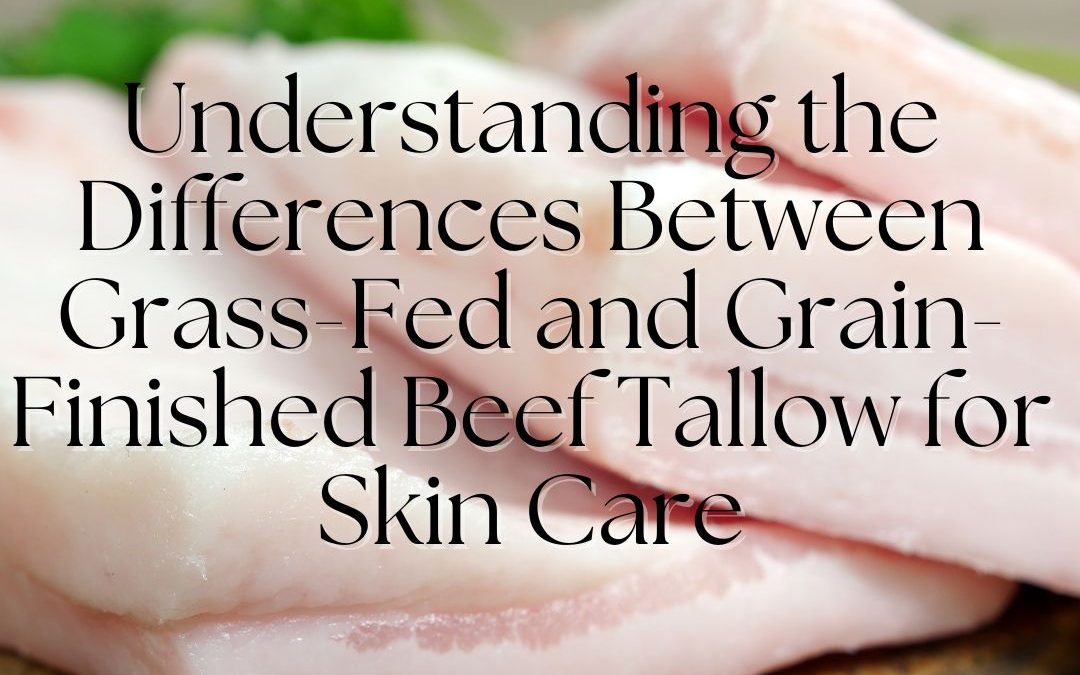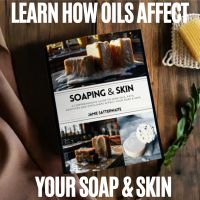This post may contain affiliate links, to learn more about them, check out our Disclosure.
Beef tallow has become a favorite ingredient in natural skincare, known for its nourishing properties and compatibility with human skin. However, the diet of the cattle—whether grass-finished or grain-finished—plays a significant role in the quality and benefits of the tallow. In this blog, we’ll explore the differences between grass-finished and grain-finished beef tallow, focusing on their skin benefits and their respective pros and cons.
What Do These Terms Mean?
- Grass-Finished: These cattle consume only grass and forage throughout their lives, including the finishing period before slaughter. This diet ensures a natural and nutrient-rich fat composition.
- Grain-Finished: Cattle start on a grass diet but are transitioned to a grain-based diet during the final months before slaughter. This process increases their weight and alters the fat composition.
Skin Benefits of Beef Tallow
Beef tallow, regardless of the finishing diet, is a rich source of:
- Vitamins A, D, E, and K: Essential for skin repair, hydration, and elasticity.
- Omega Fatty Acids: Maintain the skin’s lipid barrier and prevent moisture loss.
- Conjugated Linoleic Acid (CLA): Known for anti-inflammatory and anti-aging properties.
- Natural Emollients: Mimic the skin’s sebum, making it a superb moisturizer for all skin types.
However, the specific nutrient content varies significantly between grass-finished and grain-finished tallow.
Comparison Chart: Grass-Finished vs. Grain-Finished Tallow
| Feature | Grass-Finished | Grain-Finished |
|---|---|---|
| Diet | Grass and forage only | Grass early on; grains during finishing |
| Omega-3 Fatty Acids | Highest levels | Lower levels |
| CLA Content | Highest levels | Lower levels |
| Vitamin Content | Highest | Moderate |
| Texture of Tallow | Firmer | Softer |
| Environmental Impact | Lowest | Highest |
| Cost | Highest | Lowest |
Skin Benefits by Type
Grass-Finished Tallow
- Pros: The most nutrient-dense option, packed with Omega-3s, CLA, and fat-soluble vitamins. Its anti-inflammatory properties make it ideal for sensitive or dry skin.
- Cons: Typically more expensive and harder to source compared to grain-finished tallow.
Grain-Finished Tallow
- Pros: Softer texture, making it easier to work with in DIY skincare recipes. It’s also more affordable and widely available.
- Cons: Lower levels of beneficial Omega-3s, CLA, and vitamins, which makes it less potent for skincare. Higher Omega-6 content could contribute to inflammation in some cases.
Choosing the Right Tallow for Your Skincare Routine
When selecting tallow for skincare, consider the following:
- Sensitive or Inflamed Skin: Grass-finished tallow is the best choice for its anti-inflammatory properties and higher nutrient content.
- Budget-Friendly Options: Grain-finished tallow provides good benefits at a lower price point.
- Environmental Concerns: Grass-finished tallow is more sustainable, as it involves regenerative farming practices with minimal environmental impact.
Beef tallow is an excellent natural skincare ingredient, but the differences between grass-finished and grain-finished tallow are essential to understand. Grass-finished tallow offers superior skin benefits, while grain-finished tallow is a cost-effective and convenient alternative. Choosing the right type depends on your skincare needs, budget, and values.
For the best results, always source high-quality tallow from trusted suppliers who prioritize sustainability and transparency. Whether you’re crafting soap, balms, or moisturizers, understanding these distinctions ensures you get the most out of this incredible natural ingredient.ow from trusted suppliers who prioritize quality and sustainability.



